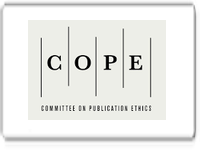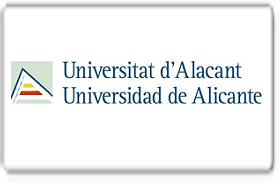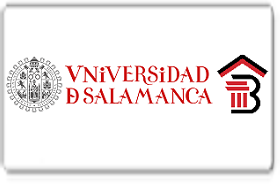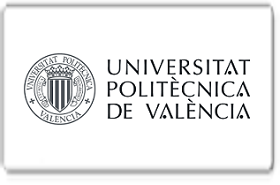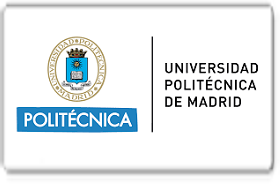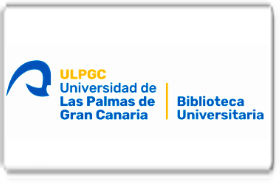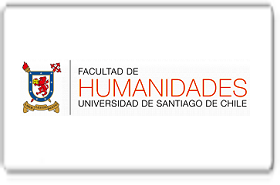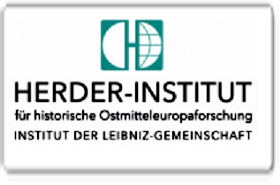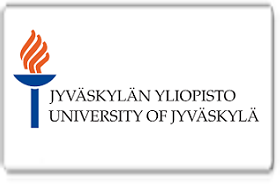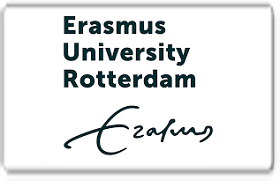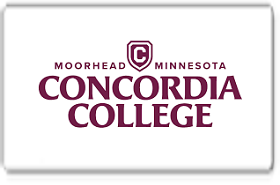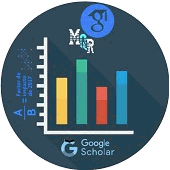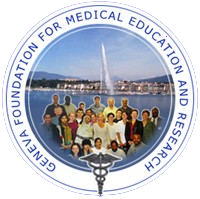Tratamiento de reemplazo hormonal enfocado en las opciones de fertilidad en mujeres con Síndrome de Turner
DOI:
https://doi.org/10.56048/MQR20225.8.2.2024.3609-3626Palabras clave:
Síndrome de Turner; Tratamiento Hormonal; Fertilidad, Reemplazo Hormonal; Manejo ReproductivoResumen
Introducción: El tratamiento de reemplazo hormonal en mujeres con Síndrome de Turner (ST), enfocado en estrógenos, progesterona, y gonadotropinas como FSH y LH, es crucial para abordar la infertilidad relacionada con esta condición genética. Este estudio revisa la literatura existente para evaluar la eficacia de estos fármacos en mejorar la función ovárica y las opciones de fertilidad.
Objetivo: Analizar y sintetizar la literatura actual sobre las opciones de tratamiento de reemplazo hormonal y su efectividad en mejorar la fertilidad en mujeres con ST.
Metodología: Se llevó a cabo una revisión bibliográfica en plataformas medicas como PubMed y MEDLINE, utilizando palabras clave como "Síndrome de Turner", "Tratamiento de Reemplazo Hormonal", y "Fertilidad". Se incluyeron estudios de los últimos 5 años en inglés y español, enfocados en tratamientos hormonales y fertilidad.
Resultados: Los estudios revisados indican que fármacos como el estrógeno y la progesterona en terapia de reemplazo hormonal pueden mejorar la función ovárica en mujeres con ST. Algunos casos reportaron éxito con el uso de FSH y LH para estimular la ovulación. Sin embargo, la variabilidad en las respuestas y los posibles efectos secundarios requieren una consideración cuidadosa.
Conclusiones: El tratamiento con estrógenos, progesterona, FSH y LH ofrece posibilidades en la mejora de la fertilidad en ST, pero debe ser personalizado y monitorizado rigurosamente para optimizar resultados y minimizar riesgos.
Descargas
Métricas
Cited
DOI: 10.56048![]()
Citas
Abir, R., Oron, G., & Shufaro, Y. (2020). Fertility in patients with Turner syndrome. Fertility and sterility, 114(1), 73-74. https://www.fertstert.org/article/S0015-0282(20)30337-X/fulltext
Bernard, V., Donadille, B., Zenaty, D., Courtillot, C., Salenave, S., Brac de la Perrière, A., Albarel, F., Fèvre, A., Kerlan, V., Brue, T., Delemer, B., Borson-Chazot, F., Carel, J. C., Chanson, P., Léger, J., & Touraine, P. (2016). Spontaneous fertility and pregnancy outcomes amongst 480 women with Turner syndrome. Human Reproduction, 31(4), 782-788. https://academic.oup.com/humrep/article-abstract/31/4/782/2380100
Blakemore, J. K., Wei, L. S., & Quinn, G. P. (2019). Addressing practical concerns surrounding fertility preservation in patients with Turner syndrome. Fertility and sterility, 112(4), 651-652. https://www.fertstert.org/article/S0015-0282(19)30494-7/fulltext
Bodri, D. (2023). Reproductive health in Turner’s syndrome: from puberty to pregnancy. Frontiers in Endocrinology, 14, 487-495. https://doi.org/10.3389/fendo.2023.00145
Bondy, C. (2014). Pregnancy and cardiovascular risk for women with Turner syndrome. Women's Health (London), 10(4), 469-476. https://journals.sagepub.com/doi/full/10.2217/WHE.14.34
Cadoret, F., Parinaud, J., Bettiol, C., Pienkowski, C., Letur, H., Ohl, J., ... & Parant, O. (2018). Pregnancy outcome in Turner syndrome: a French multi-center study after the 2009 guidelines. European Journal of Obstetrics & Gynecology and Reproductive Biology, 229, 20-25. https://www.sciencedirect.com/science/article/abs/pii/S0301211518303646
Calanchini, M., Aye, C. Y., Orchard, E., Baker, K., Child, T., Fabbri, A., ... & Turner, H. E. (2020). Fertility issues and pregnancy outcomes in Turner syndrome. Fertility and sterility, 114(1), 144-154. https://www.sciencedirect.com/science/article/pii/S0015028220302466
Cleemann, L., Holm, K., Kobbernagel, H., Kristensen, B., Skouby, S. O., Jensen, A. K., & Gravholt, C. H. (2017). Dosage of estradiol, bone and body composition in Turner syndrome: a 5-year randomized controlled clinical trial. European Journal of Endocrinology, 176(2), 233-242.
Culen, C., Ertl, D. A., Schubert, K., Bartha-Doering, L., & Haeusler, G. (2017). Care of girls and women with Turner syndrome: beyond growth and hormones. Endocrine connections, 6(4), R39-R51. https://ec.bioscientifica.com/view/journals/ec/6/4/R39.xml
Donadille, B., Bernard, V., & Christin‐Maitre, S. (2019, March). How can we make pregnancy safe for women with Turner syndrome?. In American Journal of Medical Genetics Part C: Seminars in Medical Genetics (Vol. 181, No. 1, pp. 34-41). Hoboken, USA: John Wiley & Sons, Inc.. https://www.frontiersin.org/articles/10.3389/fendo.2020.586055/full
Gravholt, C. H., Andersen, N. H., Conway, G. S., Dekkers, O. M., Geffner, M. E., Klein, K. O., ... & International Turner Syndrome Consensus Group. (2017). Clinical practice guidelines for the care of girls and women with Turner syndrome: proceedings from the 2016 Cincinnati International Turner Syndrome Meeting. European journal of endocrinology, 177(3), G1-G70. https://pubmed.ncbi.nlm.nih.gov/28705803/
Gravholt, C. H., Andersen, N. H., Conway, G. S., Dekkers, O. M., Geffner, M. E., Klein, K. O., ... & Backeljauw, P. F. (2023). Clinical practice guidelines for the care of girls and women with Turner syndrome. The Journal of Clinical Endocrinology & Metabolism, 108(1), e1-e54. https://doi.org/10.1210/clinem/dgac005
Huang, A. C., Olson, S. B., & Maslen, C. L. (2021). A review of recent developments in Turner syndrome research. Journal of cardiovascular development and disease, 8(11), 138.
Morgan, T. L., Kapa, H. M., Crerand, C. E., Kremen, J., Tishelman, A., Davis, S., & Nahata, L. (2019). Fertility counseling and preservation discussions for females with Turner syndrome in pediatric centers: practice patterns and predictors. Fertility and sterility, 112(4), 740-748. https://www.sciencedirect.com/science/article/pii/S0015028219304340
Nadesapillai, S., van der Velden, J., van der Coelen, S., Schleedoorn, M., Sedney, A., Spath, M., ... & Fleischer, K. (2023). TurnerFertility trial: Fertility preservation in young girls with Turner syndrome by freezing ovarian cortex tissue—A prospective intervention study. Fertility and Sterility, 120(5), 1048-1060. https://www.sciencedirect.com/science/article/pii/S0015028223007276
Nawroth, F., Schüring, A. N., & von Wolff, M. (2020). The indication for fertility preservation in women with Turner syndrome should not only be based on the ovarian reserve but also on the genotype and expected future health status. Acta obstetricia et gynecologica Scandinavica, 99(12), 1579-1583. https://obgyn.onlinelibrary.wiley.com/doi/full/10.1111/aogs.13984
Oktay, K., Bedoschi, G., Berkowitz, K., Bronson, R., Kashani, B., McGovern, P., Pal, L., Quinn, G., & Rubin, K. (2016). Fertility Preservation in Women with Turner Syndrome: A Comprehensive Review and Practical Guidelines. Journal of Pediatric and Adolescent Gynecology, 29(5), 409-416. https://www.sciencedirect.com/science/article/pii/S1083318815003575
Ramage, K., Grabowska, K., Silversides, C., Quan, H., & Metcalfe, A. (2020). Maternal, pregnancy, and neonatal outcomes for women with Turner syndrome. Birth Defects Research, 112(14), 1067-1073. https://onlinelibrary.wiley.com/doi/abs/10.1002/bdr2.1739
Rodriguez-Wallberg, K. A., Nilsson, H. P., & Lundberg, F. E. (2023). Trends and outcomes of fertility preservation for girls, adolescents and young adults with Turner syndrome: A prospective cohort study. Frontiers in Endocrinology, 14, 1135249. https://www.frontiersin.org/journals/endocrinology/articles/10.3389/fendo.2023.1135249/full
Schleedoorn, M. J., van der Velden, A. A. E. M., Braat, D. D. M., Peek, R., & Fleischer, K. (2019). To Freeze or Not to Freeze? An Update on Fertility Preservation In Females with Turner Syndrome. Pediatric Endocrinology Reviews (PER), 16(3). https://www.researchgate.net/profile/Myra-Schleedoorn/publication/332166842_To_Freeze_or_Not_to_Freeze_An_Update_on_Fertility_Preservation_In_Females_with_Turner_Syndrome/links/5f080a3645851550509a2379/To-Freeze-or-Not-to-Freeze-An-Update-on-Fertility-Preservation-In-Females-with-Turner-Syndrome.pdf
Shankar, R. K., & Backeljauw, P. F. (2018). Current best practice in the management of Turner syndrome. Therapeutic advances in endocrinology and metabolism, 9(1), 33-40. https://journals.sagepub.com/doi/full/10.1177/2042018817746291
Turner Syndrome Society. (2012). What is Turner syndrome? Fact sheet. Retrieved July 16, 2012, from https://www.nichd.nih.gov/health/topics/turner/conditioninfo/risk
Van der Coelen, S., van der Velden, J., Nadesapillai, S., Braat, D., Peek, R., & Fleischer, K. (2024). Navigating fertility dilemmas across the lifespan in girls with Turner syndrome—a scoping review. Human Reproduction Update, dmae005. https://academic.oup.com/humupd/advance-article/doi/10.1093/humupd/dmae005/7624171
Viuff, M. H., Berglund, A., Juul, S., Andersen, N. H., Stochholm, K., & Gravholt, C. H. (2020). Sex hormone replacement therapy in Turner syndrome: impact on morbidity and mortality. The Journal of Clinical Endocrinology & Metabolism, 105(2), 468-478. https://academic.oup.com/jcem/article/105/2/468/5572683
Viuff, M. H., Just, J., Brun, S., Dam, T. V., Hansen, M., Melgaard, L., ... & Gravholt, C. H. (2022). Women with Turner syndrome are both estrogen and androgen deficient: the impact of hormone replacement therapy. The Journal of Clinical Endocrinology & Metabolism, 107(7), 1983-1993. https://academic.oup.com/jcem/article/107/7/1983/6550585
Więcek, M., Gawlik, J., Nowak, Z., & Gawlik, A. (2022). Questions concerning fertility preservation during transition in girls with Turner syndrome: review of the literature. Endocrine Connections, 11(12). https://ec.bioscientifica.com/view/journals/ec/11/12/EC-22-0344.xml
Yang, S. (2017). Diagnostic and therapeutic considerations in Turner syndrome. Annals of Pediatric Endocrinology & Metabolism, 22(4), 226. https://www.ncbi.nlm.nih.gov/pmc/articles/PMC5769837/
Ye, M., Yeh, J., Kosteria, I., & Li, L. (2020). Progress in fertility preservation strategies in Turner syndrome. Frontiers in medicine, 3. https://www.frontiersin.org/articles/10.3389/fmed.2020.00003/full?fbclid=IwAR2oW4HSX_B1Tls8AsyOLzYn_t3LOoS5s7ART8RWeTqdSHrOUNY5QROqpcc
Publicado
Cómo citar
Número
Sección
Categorías
Licencia

Esta obra está bajo una licencia internacional Creative Commons Atribución 4.0.
Los autores se comprometen a respetar la información académica de otros autores, y a ceder los derechos de autor a la Revista MQRInvestigar, para que el artículo pueda ser editado, publicado y distribuido. El contenido de los artículos científicos y de las publicaciones que aparecen en la revista es responsabilidad exclusiva de sus autores. La distribución de los artículos publicados se realiza bajo una licencia 


















